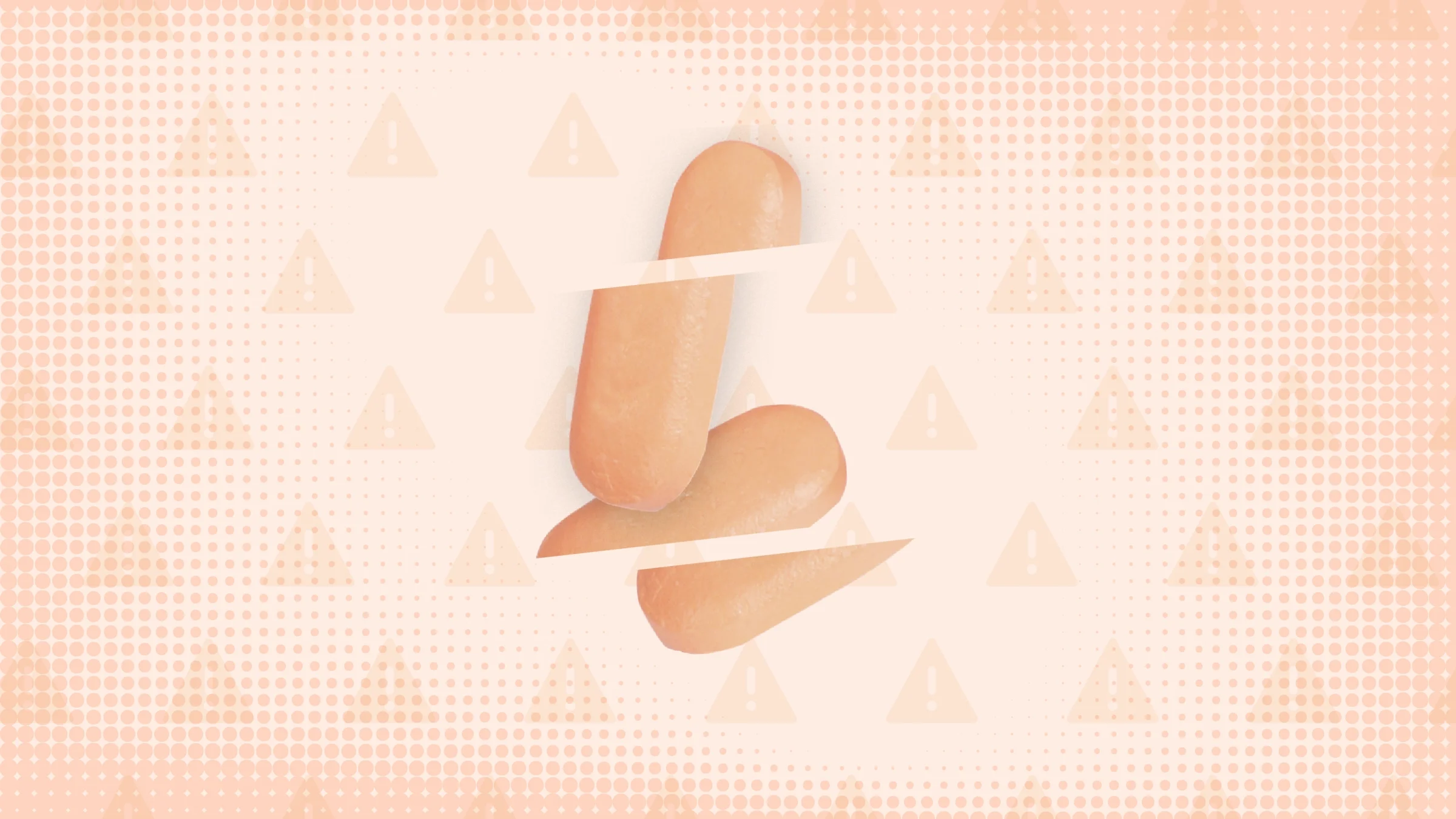Key takeaways:
Trikafta (elexacaftor / tezacaftor / ivacaftor) is an oral medication used to treat cystic fibrosis (CF) in people with certain gene mutations related to CF.
The most common Trikafta side effects are headache, upper respiratory tract infection, and abdominal pain. Some people also develop a rash or a stuffy or runny nose.
Rare but serious Trikafta side effects include liver damage and eye problems. Contact your healthcare team right away if you think you’re experiencing a serious side effect.
Save on related medications
Trikafta is an oral medication used to treat cystic fibrosis (CF) in people with certain gene mutations related to CF. It combines three active ingredients — elexacaftor, tezacaftor, and ivacaftor — that work together to improve lung function.
When you start Trikafta, you’ll be given specific instructions to follow when taking it. Along with this information, you may be told about potential side effects. These side effects may be caused by Trikafta or, in some cases, the underlying CF.
Trikafta side effects at a glance
Below are some of the side effects reported in Trikafta clinical trials. Keep in mind, everyone responds differently to medications.
Common Trikafta side effects include:
Headache
Upper respiratory tract infection
Abdominal pain
Bloating
Diarrhea
Rash
Stuffy or runny nose
Sinus infection
Menstrual cramps
Dizziness
Acne
Elevated liver enzymes
Less common but potentially serious Trikafta side effects include:
Liver damage
Eye problems, such as cataracts
Flu
Hypoglycemia (low blood glucose)
Let’s look more closely at eight Trikafta side effects and how you can manage them.
1. Headache
One of the most common Trikafta side effects is headache. These headaches are usually mild and may go away after the first few weeks of treatment. In the meantime, acetaminophen (Tylenol) may help provide relief for occasional headaches.
Headaches can also be caused by other things, such as stress, dehydration, and lack of sleep. Regular exercise, a balanced diet, and a good night’s sleep can go a long way in reducing headache frequency and severity.
Headaches from Trikafta may become severe and persistent. Tell your prescriber if they’re interfering with your daily activities or causing you significant distress.
2. Upper respiratory tract infection
Upper respiratory tract infections (URTIs) are another common Trikafta side effect. But people living with CF are more susceptible to these types of infections. If you develop a URTI, symptoms may include a runny or stuffy nose, a sore throat, and coughing.
Tell your healthcare team if you think you might be getting sick. They can determine if testing and treatment are needed or if you can safely manage your symptoms at home.
URTIs may not be entirely preventable, but you can lower your risk of getting sick by:
Washing your hands regularly
Avoiding close contact with people who are sick
Keeping your living and working environments clean
3. Abdominal pain
Some people experience abdominal pain and bloating while taking Trikafta. But these symptoms are also common with CF. If this happens to you, take note of when the pain begins, if it gets better at certain times, and if anything makes it worse.
For some people, this side effect may improve over time. But for others, it may be more severe and persistent. One study, for example, found that after 6 months of Trikafta treatment, women reported reduced bloating. Men, on the other hand, had increased bloating.
Tell your care team about your symptoms so they can help determine next steps. The abdominal pain may be from Trikafta or another cause, such as gastrointestinal disorders related to CF. Distal intestinal obstruction syndrome is one example.
In certain situations, abdominal pain requires emergency medical attention. If your pain is suddenly getting worse, you have a fever, or you see blood in your stool or vomit, go to the ER.
4. Diarrhea
Diarrhea is another common Trikafta side effect. In the study mentioned above, both men and women reported increased diarrhea after taking Trikafta for 6 months. But it’s also common for people living with CF to experience chronic diarrhea. That’s because CF can affect your pancreas, which helps you digest food.
Be sure to drink plenty of fluids to replace those that you’re losing. If applicable, take your pancreatic enzyme medication, such as Creon or Zenpep, as prescribed by your healthcare team. They can also provide guidance on dietary changes to help.
If your diarrhea doesn’t go away or becomes severe, contact your healthcare team. If left untreated, diarrhea could lead to dehydration and reduced nutrient absorption (malabsorption).
5. Rash
Some people get a rash while taking Trikafta. You might notice redness, itchiness, or even a slight burning sensation on your skin. In clinical trials, a rash was more likely in female participants taking Trikafta. Hormonal contraceptives are also thought to increase the risk of developing a rash.
If you get a rash while taking Trikafta, tell your healthcare team. If the rash is mild, you may be able to keep taking the medication. If you have a severe rash, your prescriber may ask you to stop taking Trikafta while the rash heals. You may be able to start taking Trikafta again after the rash is gone.
Keep in mind: Rash is a rare side effect, but sometimes it’s a symptom of a severe allergic reaction (anaphylaxis). If you also develop hives, swelling of the face, tongue, or throat, or a fast heartbeat, call 911 or have someone take you to the ER.
6. Stuffy or runny nose
Some people reported a stuffy or runny nose while taking Trikafta during clinical trials. But chronic sinus inflammation is common in people living with CF, which causes a stuffy nose. A small study found that Trikafta may actually help improve nasal congestion. And a runny nose can be a sign that your sinuses are draining as the mucus thins out.
If you notice increased nasal congestion after starting Trikafta, drink plenty of fluids, use a humidifier, and try nasal irrigation for relief. But if your symptoms are persistent or start feeling more like a URTI or another infection, contact your healthcare team.
7. Liver damage
Rarely, Trikafta can cause liver damage. Symptoms of liver damage include jaundice (yellowing of the skin or eyes), dark urine, and stomach pain. Sometimes, liver damage doesn’t cause symptoms. In this case, it may show up in your blood work during a routine checkup.
Your healthcare team will check your liver function before you start Trikafta and while you’re taking it. But contact them immediately if you think you’re experiencing symptoms of liver damage.
8. Eye problems
Rarely, cataracts have been reported in children and adolescents taking Trikafta. Regular eye exams can help detect any issues early.
It’s best to get an eye exam before starting Trikafta and to keep up with eye appointments while taking it. Report any blurred vision, sensitivity to light, or other changes in eyesight to your prescriber and eye specialist.
When should you contact your healthcare team about Trikafta side effects?
Contact your healthcare team if you experience Trikafta side effects that feel bothersome or don’t go away. They may be able to recommend strategies to help. In some cases, they may recommend stopping Trikafta until your side effects improve.
If you experience severe or persistent side effects, seek medical attention immediately. This includes severe or persistent abdominal pain, eye problems, and symptoms of liver damage. If you think you might be having an allergic reaction, call 911 or have someone take you to the ER.
The bottom line
Common Trikafta (elexacaftor / tezacaftor / ivacaftor) side effects include headache, upper respiratory tract infections, and abdominal pain. A rash and a stuffy or runny nose are also possible. Serious side effects are rare but possible, and they include eye problems and liver damage. Get medical help right away if you think you’re experiencing a serious side effect.

Why trust our experts?



References
Cystic-Fibrosis.com. (2019). Gastrointestinal problems: Diarrhea.
Cystic Fibrosis Foundation. (n.d.). Research into infections.
Diseroad, E. R., et al. (2022). Rechallenge of elexacaftor/tezacaftor/ivacaftor after skin rash in two pediatric patients. The Journal of Pediatric Pharmacology and Therapeutics.
Francis, P., et al. (2022). Drug-induced hepatotoxicity. StatPearls.
Green, J., et al. (2018). Interventions for treating distal intestinal obstruction syndrome (DIOS) in cystic fibrosis. Cochrane Database of Systematic Reviews.
Lusman, S. S., et al. (2017). Approach to chronic abdominal pain in cystic fibrosis. Journal of Cystic Fibrosis.
Safi, C., et al. (2019). Chronic rhinosinusitis in cystic fibrosis: Diagnosis and medical management. Medical Sciences.
Schwarzenberg, S. J., et al. (2021). Elexacaftor/tezacaftor/ivacaftor alters gastrointestinal symptoms: Six-month report of PROMISE GI. Journal of Cystic Fibrosis.
Stapleton, A. L., et al. (2022). Elexacaftor-tezacaftor-ivacaftor improves sinonasal outcomes in cystic fibrosis. Journal of Cystic Fibrosis.
Vertex Pharmaceuticals Incorporated. (2023). Trikafta- elexacaftor, tezacaftor, and ivacaftor.







